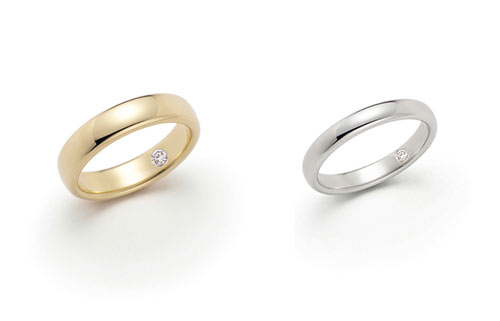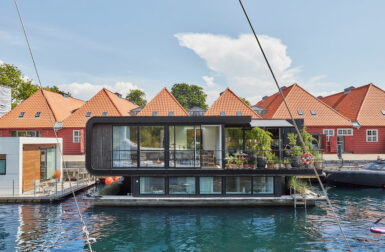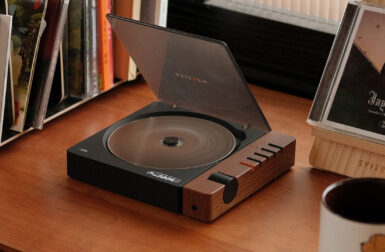
Bruce and Stephanie Tharp are a husband-and-wife design team who run the Chicago-based studio, materious. Still just dating in 2005, their first collaborative project, a parent-and-child coat rack, won them Best in Show honors at a Design Within Reach competition. It was a good omen. Since then their work has been exhibited several times in Milan and New York, and licensed to companies like Ligne Roset, Crate and Barrel, and Kikkerland.
In addition to their commercial work, some of which they self-produce, they also engage in a more conceptual and critical practice. Having coined the term, Discursive Design , they are working on a book project by the same name, which problematizes such “design for debate” and helps guide those wishing for this kind of engagement.
They are full-time professors of Industrial Design at the University of Illinois-Chicago (UIC), where Stephanie chairs the department and Bruce directs the graduate program. Both have undergraduate degrees in mechanical engineering; Stephanie received a graduate industrial design degree from the Rhode Island School of Design while Bruce studied at Pratt Institute. Bruce also earned a PhD in sociocultural anthropology from the University of Chicago.
Late in 2008 they became proud parents of their daughter, Isla Rey, who inspired their latest project — a philanthropic savings bank set.
Here are 5 design projects that are of interest to them within the realm of discursive design, which they explain briefly:
We define discursive design as a category of product design that treats artifacts principally as transmitters of substantive ideas, rather than as mere instruments of utility.
The primary intent of the discursive designer is to to encourage users’ reflection upon, or engagement with, a particular discourse; the goal is to affect the intellect.
As distinct from objects of art, architecture, and graphics, which can all be agents of discourse, products have particular qualities that offer unique communicative advantages.
Discursive design leverages functionality (use-value) to achieve the primary goal of delivering a deliberate message, one potent enough to spark contemplation, discussion, and debate.
Moving beyond traditional styling or commercial problem solving, discursive design embraces a more expansive role for the designer as sociocultural critic, educator, and provocateur.

1. Diamond Rings by Tobias Wong
With great respect for our late colleague, Tobias Wong, we are including his Diamond Rings project from 2004. We have long been fans of this project and even toyed with the prospect of purchasing these as our wedding rings (though ultimately decided to craft our own designs). The diamond industry, with their pernicious production practices and marketing myths is certainly something that we should be talking about more and questioning as individual consumers and society.

2. Goose Cones by Michael Savona
While a student of Bruce’s in the graduate Designed Objects program at the School of the Art Institute of Chicago, Michael Savona conceived of his Goose Cones. Here Michael began working with the idea of nature and its clash with the built urban environment. While bringing this idea to the fore, it also is a potent signal and effective in its traditional role as a warning device.

3. The Body Master by Zbigniew Libera
This is a project created by famed Polish artist, Zbigniew Libera, around 1994. The Body Master is a working child’s toy that replicates a body-building machine, but has paper weights. It obviously deals with cultural notions of body image, and with the less typically addressed male body. Created by an artist, it also raises the contested issue of who can create discursive design, and the boundary between the disciplines of art and design.

4. Objects for Arithmomanics by Julijonas Urbonas
This is a 2008 project by Julijonas Urbonas at the Royal College of Art’s Design Interactions program, where students are well known for producing “critical design.” Objects for Arithmomanics is a series of five simple domestic objects that are embedded with counters and designed for those suffering from a mental disorder marked by obsessive-compulsive counting of actions and objects in their surroundings. We like this project for its simplicity of execution and its experimentation, while discursively we read it as an acknowledgment of the vastly ignored arenas of design, especially around the negative, embarrassing, and aberrant aspects of society.

5. Fish Bowls by Roger Arquer
This is a 2007 project by Roger Arquer, which re-imagines the fish bowl in 15 different instances, examining different topics and issues. Here, the Don’t Piss Me Off version reflects on the inherent power we have over animals/pets and speaks to broader societal hegemonies. Admittedly many of the examples are “light” and even jokey, but we like the idea of simply transforming a modest vessel to a potentially powerful end — and in a way that is fully functional and therefore can easily co-exist with us in daily life.







